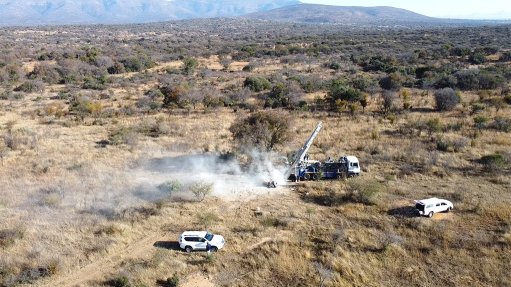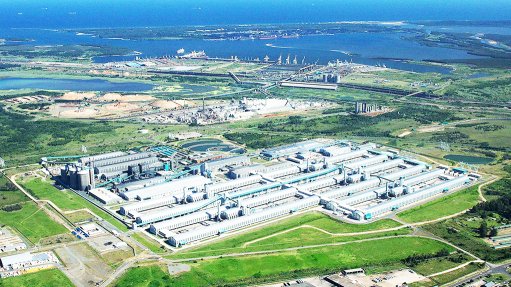Shielding data centre growth from the looming power crunch
This article has been supplied.
By: Canninah Dladla - Cluster President for English-speaking Africa at Schneider Electric
Today’s digital economy is placing unprecedented strain on the power grid. For years, efficiency gains have kept electricity use relatively stable despite rising demand, enabling net-zero ambitions.
But AI, cloud, and edge computing now threaten to reverse this trend. Indeed, forecasts predict a sharp rise in power demand through 2030.
The good news is these challenges are not insurmountable; by adopting proactive strategies such as alternative power sources, infrastructure planning, and software, operators can secure capacity, build resilient facilities, and scale sustainably.
The drivers of grid strain
AI is a leading contributor. A single AI search consumes about 10 times the electricity of a Google search, and forecasts suggest that AI and crypto mining could account for up to 10% of global electricity demand by 2030. Inference workloads, which outpace training clusters in energy needs, will accelerate consumption as models move into production.
Edge computing and IoT growth are also adding to consumption. The IEA suggests that “after globally consuming an estimated 460 terawatt-hours (TWh) in 2022, data centres’ total electricity consumption could reach more than 1,000 TWh in 2026,” which is roughly equivalent to the electricity consumption of Japan.
Overall, customer grid connection queues in energy-constrained regions now often span three to five years, driven by rising demand and the clean energy transition. It is forecasted that the global power demand from data centres will increase 50% by 2027 and by as much as 165% by the end of the decade, while some major data center hubs like Northern Virginia in the US have announced additional grid connection delays of up to seven years for large data centres amid a surge in requests.
Energy procurement strategies
Before the AI boom, data centres could tolerate longer utility lead times. Today’s urgent demand calls for alternatives such as natural gas turbines, HVO-fuelled generators, wind, solar, fuel cells, battery energy storage systems (BESS), and small modular reactors (SMRs).
In their 2024 Midyear Global Outlook, BlackRock indicates both AI and low-carbon transition could spur historically large capital spending, as well as incremental investment to meet growing energy demand, with sources like solar farms, power grids, oil, and gas expected to generate investment of US$3.5 trillion per year this decade.
Today, two scenarios define the options:
Use Case 1: Capacity exists but requires grid flexibility.
Operators must provide energy storage to comply with demand response requests. Diesel gensets (generator sets) remain common, but hydrotreated vegetable oil (HVO) fuels can save the day, offering a sustainable alternative that reduces carbon emissions by about 90%.
Behind the grid, Lithium-ion battery energy storage systems (Li-ion BESS) can provide enough energy storage to meet grid operator requirements for demand response and grid services, providing five key outcomes:
- Additional backup power.
- Reduced diesel reliance.
- Grid services participation.
- Demand charge avoidance.
- Greater use of renewables.
Use Case 2: No grid capacity exists.
Here, operators need an alternative prime power. In general, natural gas turbines are the most used prime power alternative in the short term thanks to the technology’s maturity, cost, fuel flexibility, reliability, deployment speed and scalability.
SMRs, while still in the early stages of adoption due to regulatory hurdles, costs, and public concern over the use of nuclear energy, are another option hailed as a future solution due to their promise of constant, carbon-free energy in a company's footprint.
Finally, larger data centre providers could explore local microgrid providers to skip grid queues. These are companies with massive megawatt industrial parks that may already be grid-connected with microgrids as a backup or they may be permanently islanded, offering power-as-a-service.
Utilities and software: multipliers of efficiency
Beyond hardware, partnerships with utilities are vital; they offer important insights grid capacity, carbon intensity, power quality, and regulatory landscapes, all crucial for site selection, permitting, and sustainable operations.
Furthermore, advanced technologies like digital twins and energy management software (EMS) enable better forecasting, efficient cooling, load balancing, and overall optimisation. These tools also reduce waste, cut costs, and improve sustainability while maintaining performance.
Next Steps for Operators
To mitigate looming constraints, operators should:
- Reconsider site Selection: Prioritise regions with strong grids or on-site generation opportunities while balancing latency and labour needs.
- Adopt alternative power Sources: From natural gas turbines and HVO-fuelled generators to fuel cells, solar, wind, and BESS.
- Collaborate early with utilities: Align on capacity, demand response, and infrastructure sharing.
- Design for sustainability: Renewable integration improves efficiency, eases permitting, and strengthens reputation.
Article Enquiry
Email Article
Save Article
Feedback
To advertise email advertising@creamermedia.co.za or click here
Press Office
Announcements
What's On
Subscribe to improve your user experience...
Option 1 (equivalent of R125 a month):
Receive a weekly copy of Creamer Media's Engineering News & Mining Weekly magazine
(print copy for those in South Africa and e-magazine for those outside of South Africa)
Receive daily email newsletters
Access to full search results
Access archive of magazine back copies
Access to Projects in Progress
Access to ONE Research Report of your choice in PDF format
Option 2 (equivalent of R375 a month):
All benefits from Option 1
PLUS
Access to Creamer Media's Research Channel Africa for ALL Research Reports, in PDF format, on various industrial and mining sectors
including Electricity; Water; Energy Transition; Hydrogen; Roads, Rail and Ports; Coal; Gold; Platinum; Battery Metals; etc.
Already a subscriber?
Forgotten your password?
Receive weekly copy of Creamer Media's Engineering News & Mining Weekly magazine (print copy for those in South Africa and e-magazine for those outside of South Africa)
➕
Recieve daily email newsletters
➕
Access to full search results
➕
Access archive of magazine back copies
➕
Access to Projects in Progress
➕
Access to ONE Research Report of your choice in PDF format
RESEARCH CHANNEL AFRICA
R4500 (equivalent of R375 a month)
SUBSCRIBEAll benefits from Option 1
➕
Access to Creamer Media's Research Channel Africa for ALL Research Reports on various industrial and mining sectors, in PDF format, including on:
Electricity
➕
Water
➕
Energy Transition
➕
Hydrogen
➕
Roads, Rail and Ports
➕
Coal
➕
Gold
➕
Platinum
➕
Battery Metals
➕
etc.
Receive all benefits from Option 1 or Option 2 delivered to numerous people at your company
➕
Multiple User names and Passwords for simultaneous log-ins
➕
Intranet integration access to all in your organisation

















